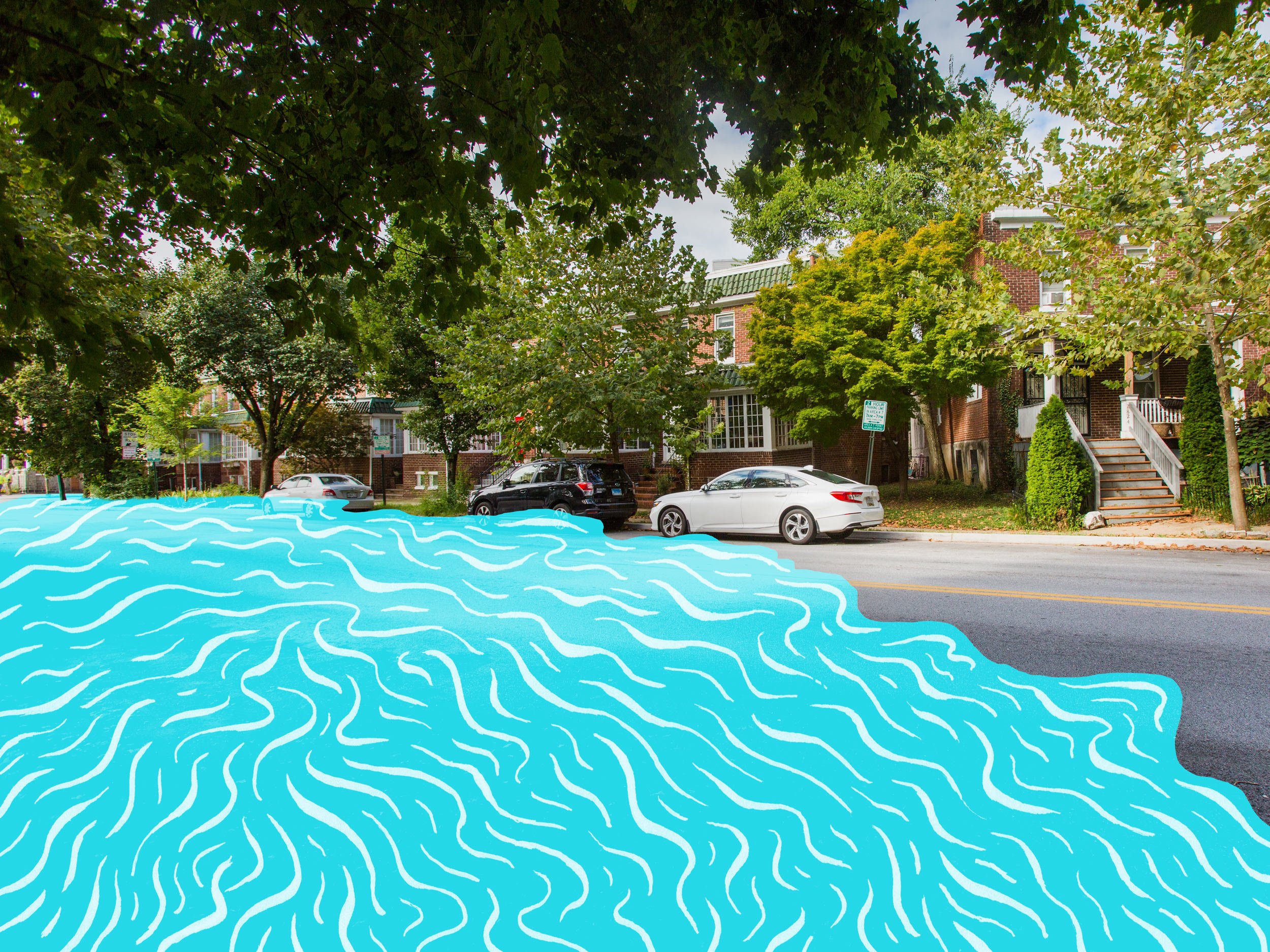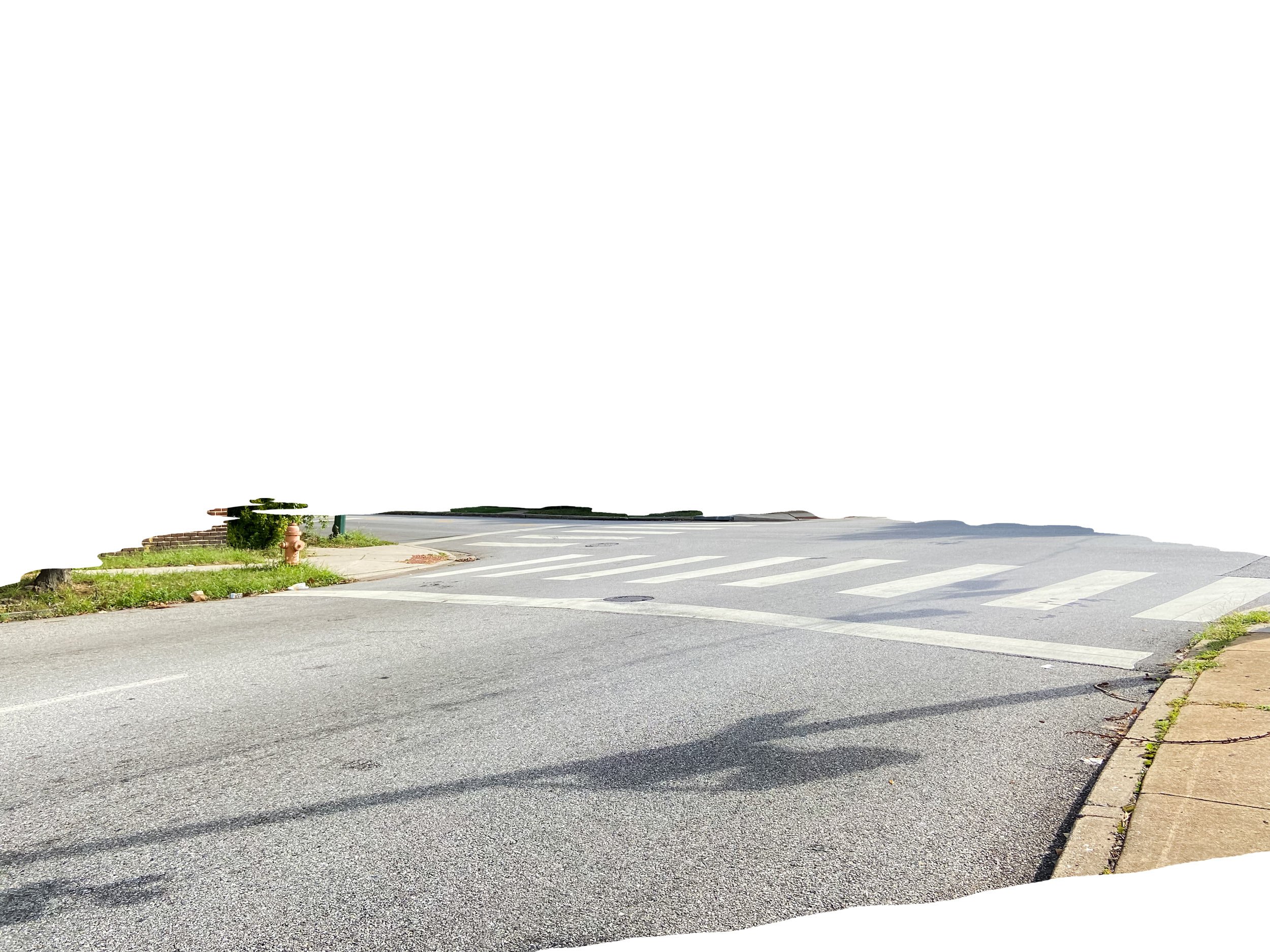
Site 3. Howard Street
Ghost Rivers: Sumwalt Run
Before Sumwalt Run was buried, its valley was a cool oasis, habitat, and living sponge.
The stream’s ponds and marshes captured storm runoff, reducing flooding and recharging groundwater. Soil and trees along its banks filtered sediment and pollutants from water. Sumwalt Run is now lost 40 feet below our roads and rowhouses. But the living trees, plants, and soil in today’s city continue to provide massive benefits by cooling city streets, sucking carbon out of the atmosphere, and reducing flooding. A single tree can drink up to 150 gallons of rain water per day!
All of this green infrastructure supports our human spaces and reduces strain on Baltimore’s century-old storm sewer system. Even in 1904 the Olmsted Brothers plan promoted the value of preserving urban streams to control stormwater, in addition to their importance to human health and wellbeing.
Today, cities and neighborhoods have belatedly begun to realize the benefits of green infrastructure. Street tree plantings and pavement removal in Remington and other neighborhoods are slowly restoring Baltimore’s tree canopy, helping to reduce the heat island effect that has had an outsized impact on Remington and the city’s working class neighborhoods. Residents have converted vacant lots into new green spaces and gardens, such as Sisson Street Park and Remington Village Green, supporting recreation and food self-sufficiency. Stream restoration at nearby Stony Run has greatly improved the health of that creek and its ecosystem.
These landscapes all connect and flow together, from the lawns and sidewalks of our neighborhoods to Baltimore’s buried streams to the Chesapeake Bay. Action in our own backyard ripples across the entire watershed.
Restored pools and marshes along nearby Stony Run catch rain and snow runoff and create new homes for wildlife.
Green Infrastructure
Green infrastructure, such as these bioswales on nearby Wyman Park Drive, collect rainwater runoff from city streets and sidewalks, allowing it to filter naturally back through the ecosystem, mimicking the marshes and trees that once lined Sumwalt Run.
Vacant lots and other in-between spaces can be regreened and reimagined as assets for the neighborhood and the environment. Strips between sidewalk and roadway can be reclaimed with trees, plantings, and permeable pavement. Rain gardens and rain barrels can turn yards into habitats and transform gutter spouts into watering cans. Pavement is not forever.
Tucked away off of Fox Street, the community garden Remington Village Green is an urban oasis in the heart of a busy neighborhood. (Photos by Magan Ruthke)
Resources & Readings
Since When Have Trees Existed Only for Rich Americans? New York Times, 2021.
Get a free tree or become an official tree steward with TreeBaltimore
Learn about Blue Water Baltimore’s work to improve health of our watershed and how you can help







